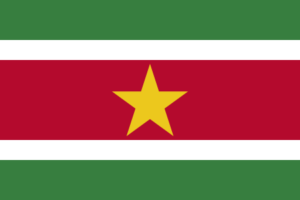
Location and Geography: Suriname is situated on the northeast coast of South America, bordered by the Atlantic Ocean to the north, French Guiana to the east, Brazil to the south, and Guyana to the west. Known for its dense rainforests and biodiversity.
Capital and Major Cities: Paramaribo is the capital and largest city of Suriname. Other significant cities include Nieuw Nickerie, Moengo, and Albina.
Government: Suriname is a republic with a parliamentary system. The President serves as the head of state and executive power, while legislative power rests in the unicameral Parliament.
Culture and Diversity: Suriname is renowned for its ethnic diversity, influenced by indigenous peoples, Africans, Indo-Surinamese, Javanese, Chinese, and Europeans. This diversity is reflected in music, dance, cuisine, and festivities such as Keti Koti, commemorating the abolition of slavery.
Education and Health: The educational system in Suriname covers primary, secondary, and higher education. Healthcare is provided by both the public and private sectors.
Economy: Suriname’s economy is based on sectors such as mining, agriculture, fishing, forestry, and industry. Gold and aluminum mining are economic pillars, while the country also produces rice and bananas.
Nature and Environment: Suriname stands out for its lush rainforests and abundant biodiversity. It includes natural reserves like the Coppename Nature Reserve and the Central Suriname Nature Reserve.
Climate: Suriname has an equatorial climate, with warm temperatures and high humidity throughout the year and a more pronounced rainy season from December to February.
Sports and Popular Culture: Football is the most popular sport in Suriname, although cricket also has enthusiastic followers. Music and dance are fundamental aspects of Surinamese culture.
History: Suriname’s history spans from indigenous cultures to Dutch colonization and the struggle for independence, achieved in 1975. It has experienced cultural diversity, reflected in its traditions and customs.
